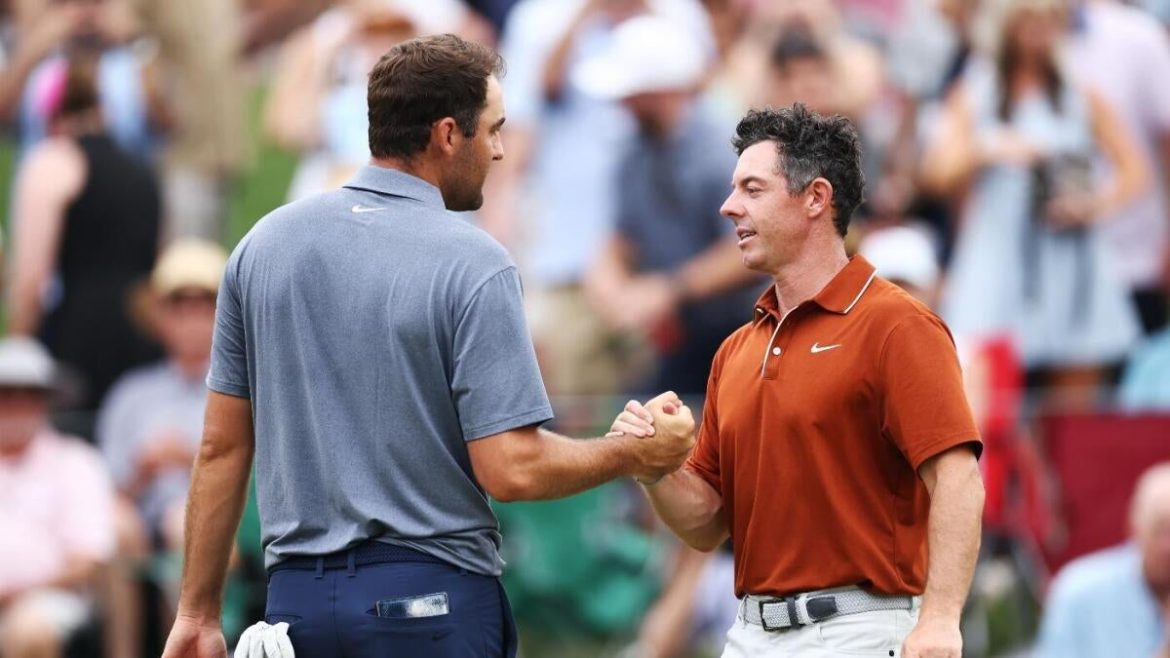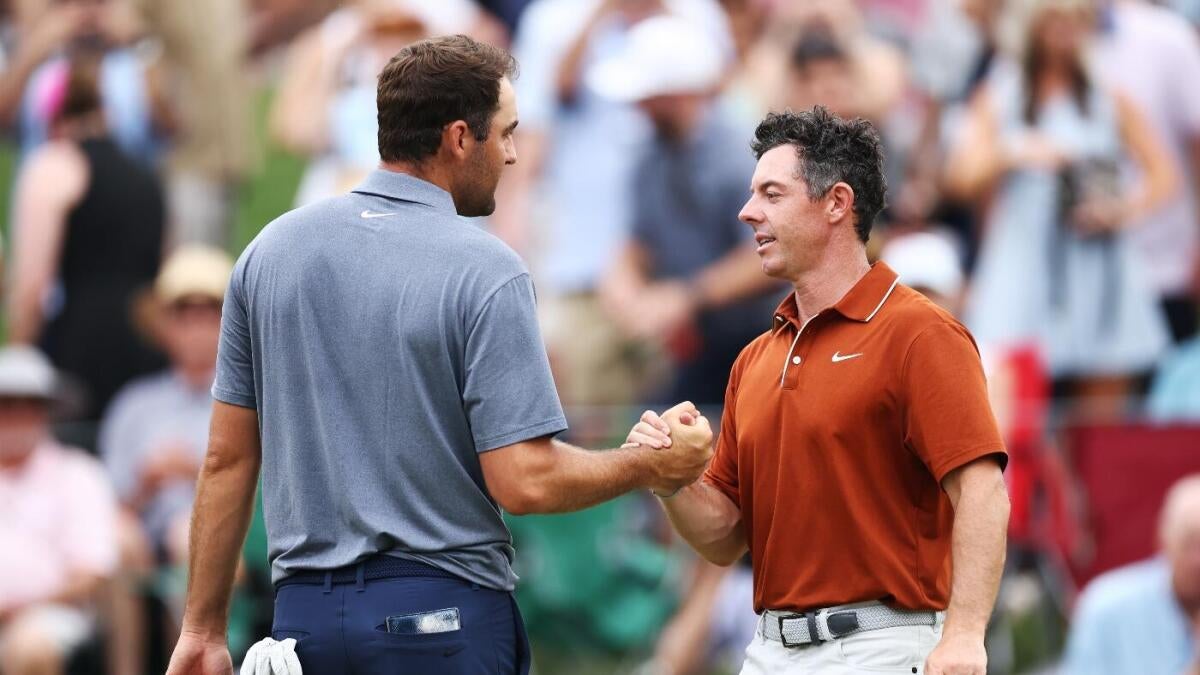Analysis of the 2025 PGA Championship Odds and Predictions
The 2025 PGA Championship held at Quail Hollow Club has captured significant attention, not only for the high-profile field but also due to the compelling forecasts emerging from advanced golf models that have proven historically accurate in major tournament predictions. This analysis examines the odds, standout players, surprising developments, and the insights provided by a proprietary golf prediction model renowned for its success in anticipating outcomes in golf majors.
Leading Contenders and Favorites
Scottie Scheffler emerges as the overall favorite in the 2025 PGA Championship betting landscape. According to FanDuel Sportsbook, he is positioned at +220 odds, meaning a $100 wager could potentially yield $220 in profit. Scheffler, currently World No. 1, is just three shots behind the 36-hole leader entering the weekend rounds, indicating a strong competitive position. His consistent form and ranking underpin these bullish expectations.
Rory McIlroy, a perennial favorite and reigning Masters champion, features prominently in the predictions despite a rocky second round where he struggled yet managed to barely make the cut. His experience and course history make him a considerable threat, though some recent inconsistencies have tempered enthusiasm. McIlroy’s odds hover around +480 to +330 depending on the sportsbook, signaling the bookmakers’ respect but also cautiousness.
Other notable contenders like Jhonattan Vegas have emerged as surprising leaders after the first two rounds with an eight-under score. While not traditionally considered a top-tier favorite, Vegas’s performance underscores the unpredictable nature of major golf tournaments where dark horses can flourish.
The Proven Accuracy of the Proprietary Golf Model
A distinctive feature of the 2025 PGA Championship coverage is the reliance on a proprietary golf prediction model developed by DFS pro Mike McClure. This model has earned considerable credibility by correctly predicting 14 major golf championships, including four consecutive Masters tournaments and multiple PGA Championships leading up to 2025. Since the PGA Tour resumed in mid-2020, the model has generated nearly $9,000 in profit from its best bets, highlighting its practical success rather than abstract theoretical prowess.
For the 2025 championship, this model simulated the tournament 10,000 times to generate a projected leaderboard and identify surprising picks that may not align with public betting trends. Its projections place Scheffler as the favorite but also highlight less obvious contenders who bettors might overlook, such as Matt Fitzpatrick and Jhonattan Vegas.
The model’s approach emphasizes the importance of utilizing comprehensive data analytics, including player form, course history, and current conditions, to refine probabilistic predictions. Such rigor makes it a valuable reference for bettors and enthusiasts seeking an edge beyond traditional analysis.
Surprising Picks and Cuts
Among the surprises this year has been the early exit of some expected contenders, including Phil Mickelson, Cam Smith, and Xander Schauffele — all missing the cut and posting at least 10-over-par scores. These developments further complicate the betting landscape, as some of the presumed frontrunners are no longer in contention, allowing others to capitalize.
The presence of 156 players, which includes 29 major champions and notable professionals such as Michael Block and several World Golf Hall of Fame inductees, underscores the depth and competitiveness of this tournament. The cut, trimming the field to the top 70 plus ties, has narrowed the competition significantly by this stage.
Weekend Outlook at Quail Hollow
The third-round prospects hinge on the gap between the leader, Jhonattan Vegas at eight-under, and World No. 1 Scheffler trailing by three strokes. Given Scheffler’s recent form and the model’s confidence, he remains the primary favorite to overtake the lead in the weekend rounds.
The course at Quail Hollow Club is known for demanding precision and strategy, which often benefits experienced major champions. Players like McIlroy and Scheffler, with proven track records in challenging scenarios, hold tactical advantages. However, the model’s simulations suggest that lesser-known or less-favored players could vie for top positions, presenting valuable opportunities for bettors seeking high-value picks.
Impact on Betting Strategies
For bettors, the combination of sportsbook odds and advanced model insights highlights several strategic considerations:
– Backing the favorite: Scheffler’s consistent high ranking and model endorsement make him a strong “core” selection in any betting portfolio.
– Value in surprises: Players like Vegas and Fitzpatrick spotlight the importance of mixing safe bets with calculated risks on dark horses, potentially maximizing returns.
– Avoiding fade risks: The failure of prominent players like Mickelson and Schauffele to make the cut serves as a cautionary reminder that reputations do not guarantee performance.
– Using model simulations: The repeated success of the model over multiple major events validates its utility, encouraging bettors to incorporate data-driven approaches alongside traditional analysis.
The Broader Context: Trends in Major Golf Championships
The 2025 PGA Championship’s narrative fits within a broader trend where data analytics and simulation models increasingly influence betting markets and fan expectations. Models capable of synthesizing vast datasets with nuanced understanding of player conditions and course specifics offer a competitive advantage in forecasting outcomes.
Furthermore, the dynamic nature of golf tournaments, where weather, pressure, and course set-up interact, ensures that even the most well-crafted models must contend with unpredictability. The tension between statistical probability and the human element creates intrigue and excitement for both participants and spectators.
—
Conclusion: Navigating the 2025 PGA Championship with Insight
The 2025 PGA Championship exemplifies the evolving intersection of athletic skill, strategic preparation, and sophisticated data analytics in professional golf. With Scottie Scheffler as the favored contender and Rory McIlroy as a formidable challenger despite recent struggles, the tournament promises a thrilling culmination at Quail Hollow.
The standout factor remains the proven accuracy of a specialized golf prediction model that has successfully identified champions in 14 majors, offering bettors and fans a powerful lens through which to view the unfolding competition. Surprising leaderboard developments and early exits by some favorites only amplify the tournament’s unpredictability, emphasizing the value of adaptable strategies informed by both odds and analytics.
In sum, the 2025 PGA Championship is not just a test of skill on the course but also a showcase of how data-driven foresight is reshaping the experience of competitive golf — delivering suspense, surprises, and strategic depth to an already captivating sport.





